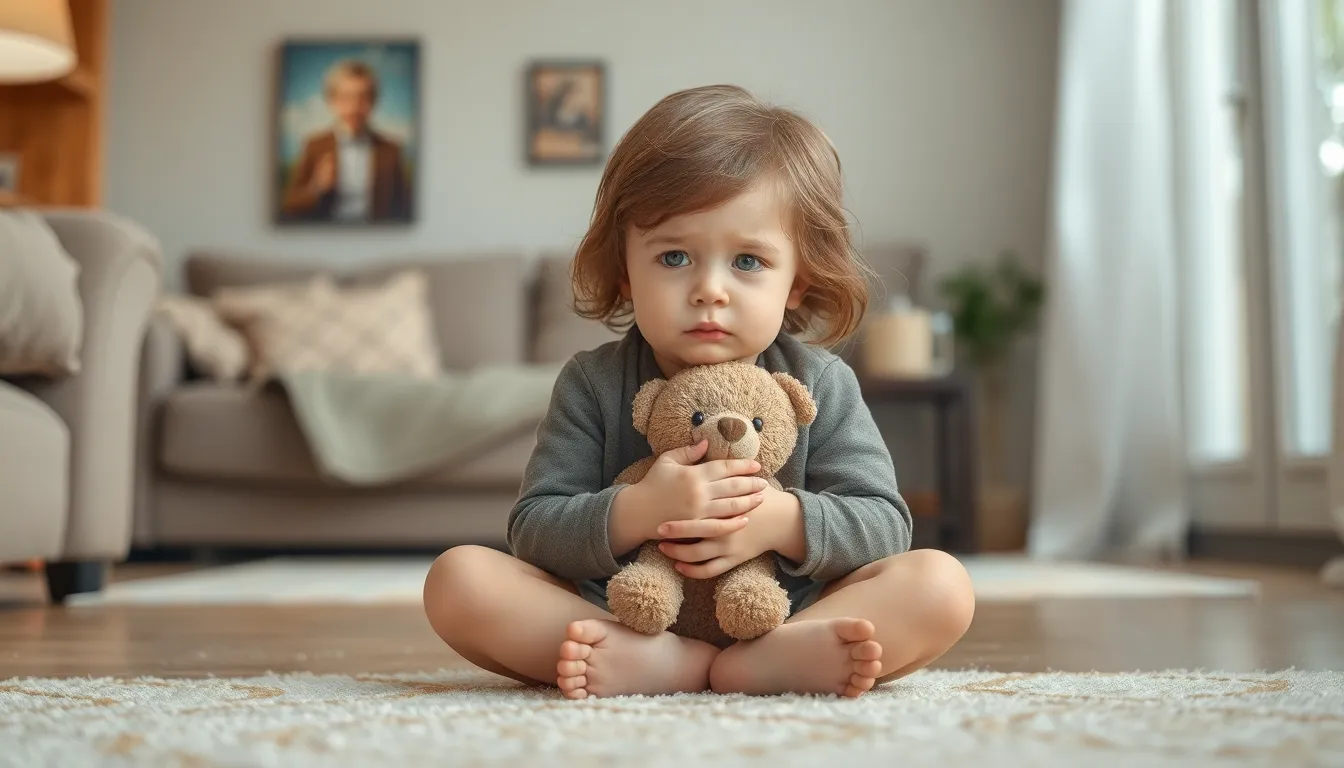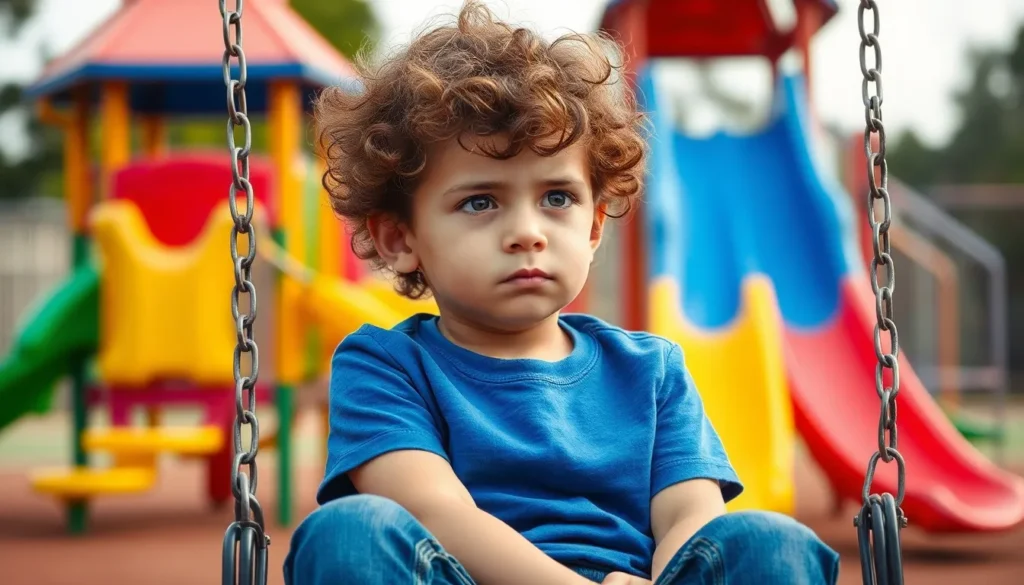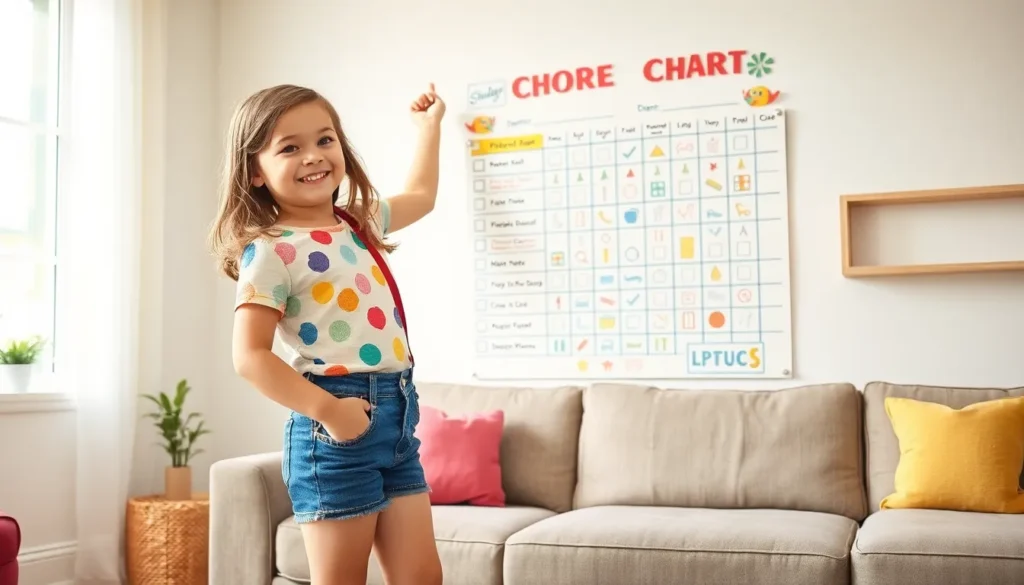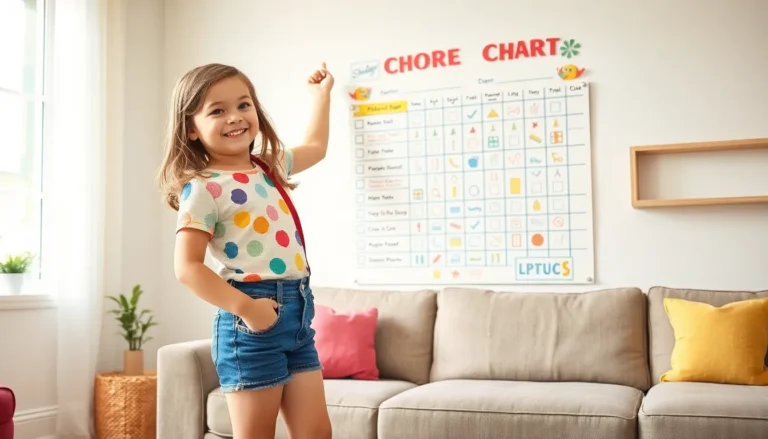Table of Contents
ToggleChildhood anxiety can feel like a shadow lurking in the corner of a brightly lit room. It’s that nagging feeling that makes even the most mundane situations seem like a high-stakes game of dodgeball. Kids should be busy building forts and perfecting their cartwheels, not worrying about what might go wrong. Thankfully, there’s hope!
Treatment for childhood anxiety disorders isn’t just about talking it out. It’s a toolkit packed with strategies that can help little ones tackle their fears head-on. From cognitive-behavioral therapy to mindfulness techniques, these approaches empower kids to reclaim their childhood joy. So let’s dive into the world of childhood anxiety treatment and discover how to turn those anxious jitters into confident giggles.
Overview of Childhood Anxiety Disorder
Childhood anxiety disorder manifests as excessive worry or fear that disrupts a child’s daily life. Symptoms can include restlessness, irritability, and difficulty concentrating. Parents often notice changes in behavior, such as avoidance of social interactions. Early identification is crucial to prevent long-term effects.
Common types of anxiety disorders in children include generalized anxiety disorder, separation anxiety disorder, and social anxiety disorder. Each type presents unique challenges. For instance, children with generalized anxiety disorder might worry about various aspects of their lives, while those with separation anxiety may struggle when away from caregivers.
The prevalence of childhood anxiety disorders continues to rise, affecting approximately 7% of children in the United States. Responding to this trend requires awareness and proactive strategies. Psychological evaluation serves as an essential first step in understanding each child’s specific needs.
Effective treatment options frequently include cognitive-behavioral therapy, exposure therapy, and medication when necessary. Cognitive-behavioral therapy helps children develop coping mechanisms and tackle irrational thoughts. Exposure therapy gradually introduces children to their fears in controlled environments, promoting resilience.
Mindfulness techniques also prove beneficial. These strategies teach children to manage anxiety symptoms through breathing exercises and relaxation methods. Encouraging open communication fosters a supportive environment for children to express their feelings, reducing the stigma associated with anxiety.
Educators and parents play a vital role in recognition and intervention. Building a strong support system allows children to thrive despite anxiety challenges. Understanding that early intervention often translates into better outcomes creates a path toward healing and improved emotional health.
Types of Childhood Anxiety Disorders

Childhood anxiety disorders encompass various forms of excessive worry or fear that disrupt a child’s daily life. Understanding these disorders is essential for effective treatment.
Generalized Anxiety Disorder
Generalized anxiety disorder, or GAD, features constant worry about multiple aspects of life. Children with GAD often stress over academic performance, health, or friendships. Symptoms might include restlessness, fatigue, and difficulty concentrating. Parents may observe their child expressing anxieties about everyday situations. The condition affects approximately 3% of children in the United States. Early identification of GAD can facilitate effective interventions, like cognitive-behavioral therapy.
Separation Anxiety Disorder
Separation anxiety disorder primarily manifests when children feel extreme distress when apart from a primary caregiver. This issue can result in reluctance to attend school or participate in social activities. Children may display physical symptoms, such as headaches or stomachaches, when anticipating separation. Notably, around 4% of children experience separation anxiety disorder at some point in their lives. Addressing this disorder involves gradual exposure to separation and reassurance to help children feel secure in their independence.
Social Anxiety Disorder
Social anxiety disorder affects about 1% to 2% of children, causing intense fear in social situations. Children often worry excessively about embarrassing themselves or being judged. Avoidance of social interactions can significantly impact friendships and academic participation. Symptoms include blushing, increased heart rate, and difficulty speaking in group settings. Effective treatments, such as exposure therapy and social skills training, help children develop confidence in social environments. Early intervention promotes healthier social development and overall emotional wellness.
Treatment Approaches for Childhood Anxiety Disorders
Effective treatment approaches for childhood anxiety disorders involve a multifaceted strategy aimed at addressing the unique needs of children. Various methods exist, each tailored to help children regain control over their anxiety.
Cognitive Behavioral Therapy (CBT)
Cognitive-behavioral therapy stands out as a primary treatment for childhood anxiety disorders. CBT equips children with skills to identify negative thought patterns and replace them with positive ones. This therapeutic approach encourages active participation, allowing children to face their fears in a controlled environment. Techniques include gradual exposure to anxiety-inducing situations, which helps reduce avoidance behavior. Children learn relaxation strategies and coping mechanisms that can be applied in real-life scenarios. Optimally, CBT sessions involve both individual and group settings, fostering social support among peers.
Medication Options
Medication options may support children experiencing severe anxiety symptoms. Selective serotonin reuptake inhibitors (SSRIs) represent the most common class of medications used in child anxiety treatment. These medications help balance neurotransmitters in the brain, promoting emotional stability. Physicians will typically prescribe medication after assessing each child’s specific needs and considering the potential benefits against side effects. Monitoring is crucial, as it allows for adjustments in dosages or medication types to better suit individual responses. Combination therapy, integrating medication with psychotherapy, often enhances overall effectiveness.
Parent-Child Interventions
Parent-child interventions play a vital role in managing childhood anxiety disorders. Engaged parents can positively influence their child’s coping strategies and emotional resilience. Techniques include participating in therapy sessions, reinforcing therapeutic skills at home, and maintaining open lines of communication about fears and anxieties. Educating parents on anxiety symptoms enhances their ability to respond effectively to their child’s needs. Creating a supportive and understanding family environment promotes emotional healing and fosters a greater sense of security in children. Programs also offer guidance on establishing routines that alleviate anxiety triggers, leading to improved emotional health.
Alternative Therapies
Alternative therapies offer additional avenues for managing childhood anxiety disorders. Techniques such as mindfulness and support groups can enhance traditional treatments.
Mindfulness and Relaxation Techniques
Mindfulness and relaxation techniques effectively help children cope with anxiety. Breathing exercises allow them to focus on their breath, promoting relaxation during stressful moments. Guided imagery assists kids in visualizing peaceful scenarios, creating a calming mental space. Another option, progressive muscle relaxation, encourages children to tense and then release different muscle groups, alleviating physical tension related to anxiety. Incorporating these practices into daily routines fosters a sense of control and empowers children to manage symptoms, leading to improved emotional well-being.
Support Groups and Peer Interaction
Support groups provide a safe space for children to express feelings and connect with others facing similar challenges. Sharing experiences can reduce feelings of isolation, reinforcing the understanding that they are not alone. Structured activities within these groups promote interaction, building social skills and confidence. Additionally, open conversations help normalize anxiety, allowing kids to discuss symptoms and coping strategies freely. Engaging with peers fosters resilience and facilitates emotional growth, making support groups a valuable resource in managing childhood anxiety disorders.
Challenges in Treatment
Treatment for childhood anxiety disorders faces several significant challenges. Stigma persists around mental health issues, often causing reluctance among families to seek help. Parents and caregivers may fear judgment or misunderstanding from others. Additionally, children may internalize these societal attitudes, feeling isolated or embarrassed about their struggles. This stigma inhibits open conversations about anxiety, making early intervention less likely.
Access to resources presents another considerable hurdle in treatment. Many families find it difficult to access specialized care due to financial constraints or lack of nearby providers. Geographic location can limit options for services like therapy or support groups. Insufficient health insurance coverage for mental health services further complicates matters, as families often prioritize physical health over mental health. Improving availability and affordability of mental health resources is crucial for effectively addressing childhood anxiety disorders.
Addressing childhood anxiety disorders is essential for promoting a child’s overall well-being. By recognizing the signs early and implementing effective treatment strategies like cognitive-behavioral therapy and mindfulness, families can support their children in overcoming these challenges. Creating a nurturing environment that encourages open dialogue about feelings and fears helps children feel secure and understood.
As awareness grows surrounding childhood anxiety, it’s crucial for parents and educators to advocate for accessible resources and support systems. With the right interventions and community support, children can reclaim their joy and thrive despite anxiety.







